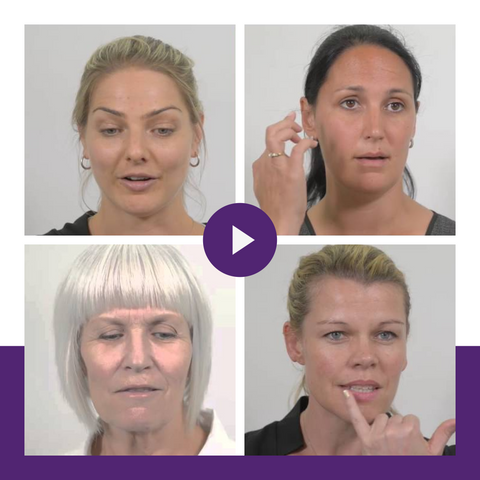Over the past three decades, the scientific and medical communities have dedicated extensive research to understanding the effects of telomerase, an enzyme with remarkable implications for ageing, longevity, and various diseases. Despite initial scepticism surrounding its potential, the wealth of evidence has progressively demonstrated the profound impact of telomerase on cellular health and the ageing process.
In the early 1980s, Dr. Elizabeth Blackburn and Dr. Carol W. Greider made a groundbreaking discovery by identifying telomerase, an enzyme in pond scum, responsible for maintaining the length of telomeres. Telomeres are protective caps at the ends of chromosomes that shorten as cells divide, leading to cellular ageing and senescence. This discovery laid the foundation for decades of research into the effects of telomerase.
In the early-to-mid 1990s, while at Geron Corporation, Dr. Bill Andrews led the research to discover both the RNA and protein components of the enzyme telomerase in the human genome. Able to prevent telomeres from shortening in human reproductive cells, this is why our children are born younger than we are even though they come from our old cells. This discovery was so significant that it triggered the Nobel prize for medicine in 2009 to be awarded.
Since the discovery of human telomerase, numerous studies have explored its role in cellular ageing. Researchers have consistently observed that telomerase activation can prevent or delay telomere shortening, effectively slowing down the ageing process in cultured cells. Additionally, experiments by Dr Ronald Depino at Harvard University have shown that over-expressing telomerase can extend lifespan.
Telomere shortening is closely associated with age-related diseases and extensive research has linked telomerase deficiency to an increased risk of developing such conditions as cardiovascular disease, diabetes, and cancer. Conversely, studies have demonstrated that telomerase activation can protect against age-related diseases and improve overall health. For instance, a study published in Nature Medicine in 2010 showed that telomerase activation reversed age-related heart disease.
In recent years telomerase has also been implicated in regenerative medicine. Studies have shown that telomerase activation can promote tissue repair and regeneration, leading to faster healing and improved outcomes.
Emerging research suggests a connection between telomere length and mental health. Chronic stress, depression, and other mental health conditions have been associated with accelerated telomeres shortening and interventions such as mindfulness, meditation and exercise, which reduce stress and improve mental well-being, have been linked to longer telomeres.
The last 30 years of scientific and medical research have provided overwhelming evidence supporting the effects of telomerase on cellular health, ageing, and various diseases. Telomerase has emerged as a crucial player in understanding the ageing process and holds immense potential for combating age-related diseases and improving human health. The journey to fully unlock its capabilities and translate them into clinical applications is ongoing, but the foundation of evidence is strong.
Still not convinced? Click on any of the studies below to find out more:
Müller HJ. (1938) The remaking of chromosomes. Collecting Net 13: 181-198.
McClintock B. (1941) The stability of broken ends of chromosomes in Zea mays. Genetics 26: 234-282.
Hayflick L. (1965). The limited in vitro lifetime of human diploid cell strains. Exp. Cell Res. 37 (3): 614–636.
Watson, J. D. Origin of concatemeric T7 DNA. Nat New Biol. 1972; 239(94):197-201.
Greider CW, Blackburn EH. (1985) Identification of a specific telomere terminal transferase activity in Tetrahymena extracts. Cell 43: 405-413.
Feng, J., W. D. Funk, et al. (1995). The RNA component of human telomerase. Science 269(5228): 1236-1241.
Weinrich, S. L., R. Pruzan, et al. (1997). Reconstitution of human telomerase with the template RNA component hTR and the catalytic protein subunit hTRT. Nat Genet 17(4): 498-502.
Sahin, E., et. al. Telomere dysfunction induces metabolic and mitochondrial compromise. Nature 470(7334): 359-365.(2011)
Mirabello, L., et. al. The association between leukocyte telomere length and cigarette smoking, dietary and physical variables, and risk of prostate cancer. Aging Cell 8(4): 405-413.(2009)
McGrath, M., et. al. Telomere length, cigarette smoking, and bladder cancer risk in men and women. Cancer Epidemiol Biomarkers Prev 16(4): 815-819.(2007)
Bodnar, A. G., M. Ouellette, et al. (1998). Extension of life-span by introduction of telomerase into normal human cells. Science 279(5349): 349-352.
Funk, W. D., C. K. Wang, et al. (2000). Telomerase expression restores dermal integrity to in vitro-aged fibroblasts in a reconstituted skin model. Exp Cell Res 258(2): 270-278.
Brouilette, S., R. K. Singh, et al. (2003). White cell telomere length and risk of premature myocardial infarction. Arterioscler Thromb Vasc Biol 23(5): 842-6
Thomas, P., N. J. O’ Callaghan, et al. (2008). Telomere length in white blood cells, buccal cells and brain tissue and its variation with ageing and Alzheimer’s disease. Mech Ageing Dev Epub 129(4):183-90
Yaffe, K., K. Lindquist, et al. (2009). Telomere length and cognitive function in community-dwelling elders: Findings from the Health ABC Study. Neurobiol Aging (Epub ahead of print).
Savale, L., A. Chaouat, et al. (2009). Shortened telomeres in circulating leukocytes of patients with chronic obstructive pulmonary disease. Am J Respir Crit Care Med 179(7): 566-571.
Le Maitre, C.L., etc. al. (2007). Accelerated cellular senescence in degenerate intervertebral discs: a possible role in the pathogenesis of intervertebral disc degeneration. Arthritis Research and Therapy 9(3):R45 27 Zhai, G., A. Aviv, et al. (2006).
Reduction of leucocyte telomere length in radiographic hand osteoarthritis: a population-based study. Ann Rheum Dis 65(11): 1444-8.
Schönland SO, Lopez C, et. al (2003). Premature telomeric loss in rheumatoid arthritis is genetically determined and involves both myeloid and lymphoid cell lineages. Proc Natl Acad Sci U S A. 100(23):13471-6
Valdes, A. M., J. B. Richards, et al. (2007). Telomere length in leukocytes correlates with bone mineral density and is shorter in women with osteoporosis. Osteoporos Int 18(9): 1203-10.
Sasaki M, Ikeda H, et. al. (2008). Telomere shortening in the damaged small bile ducts in primary biliary cirrhosis reflects ongoing cellular senescence. Hepatology 48(1):186-95.
Alder JK, Chen JJ, et. al. (2008). Short telomeres are a risk factor for idiopathic pulmonary fibrosis. Proc Natl Acad Sci U S A. 105(35):13051-6. Epub 2008 Aug 27.
Andrews, N. P., H. Fujii, et al. (2009). Telomeres and Immunological Diseases of Aging. Gerontology
Kosmadaki, M. G. and B. A. Gilchrest (2004). The role of telomeres in skin aging/photoaging. Micron 35(3): 155-159. Aguennouz M, Vita GL, et. al (2010).
Telomere shortening is associated to TRF1 and PARP1 overexpression in Duchenne muscular dystrophy. Neurobiol Aging. 2010 Feb 4. (Epub ahead of print)
Decker ML, Chavez E (2009). Telomere length in Hutchinson-Gilford progeria syndrome. Mech Ageing Dev. 130(6):377-83. 38 Vulliamy TJ, Dokal I. (2008).
Dyskeratosis congenita: the diverse clinical presentation of mutations in the telomerase complex. Biochimie 90: 122–130.
Ageing Cell 6(5):689-97. Callen E, Samper E, et. al. (2002). Breaks at telomeres and TRF2-independent end fusions in Fanconi anaemia. Hum Mol Genet 11: 439–444.
Toyoshima, M., K. Ohno, et al. (1999). Cellular senescence of angiofibroma stroma cells from patients with tuberous sclerosis. Brain Dev 21(3): 184-91.
Chang, S., A. S. Multani, et al. (2004). Essential role of limiting telomeres in the pathogenesis of Werner syndrome. Nat Genet 36(8): 877-82.
Ghosh S, Feingold E, et. al. (2010). Telomere length is associated with types of chromosome 21 nondisjunction: a new insight into the maternal age effect on Down syndrome birth.
Hum Genet. 2010 Jan 10. (Epub ahead of print) U.S. Social Security Administration: http://www.ssa.gov/history/lifeexpect.html
https://pubmed.ncbi.nlm.nih.gov/35040871/ Association of Telomere Length With Risk of Disease and Mortality
https://pubmed.ncbi.nlm.nih.gov/32101305/ Association of Leukocyte Telomere Length With Mortality Among Adult Participants in 3 Longitudinal Studies
https://pubmed.ncbi.nlm.nih.gov/26457630/ Telomere Length Shortening and Alzheimer Disease--A Mendelian Randomization Study
https://pubmed.ncbi.nlm.nih.gov/9624027/ Telomerase and the aging cell: implications for human health









